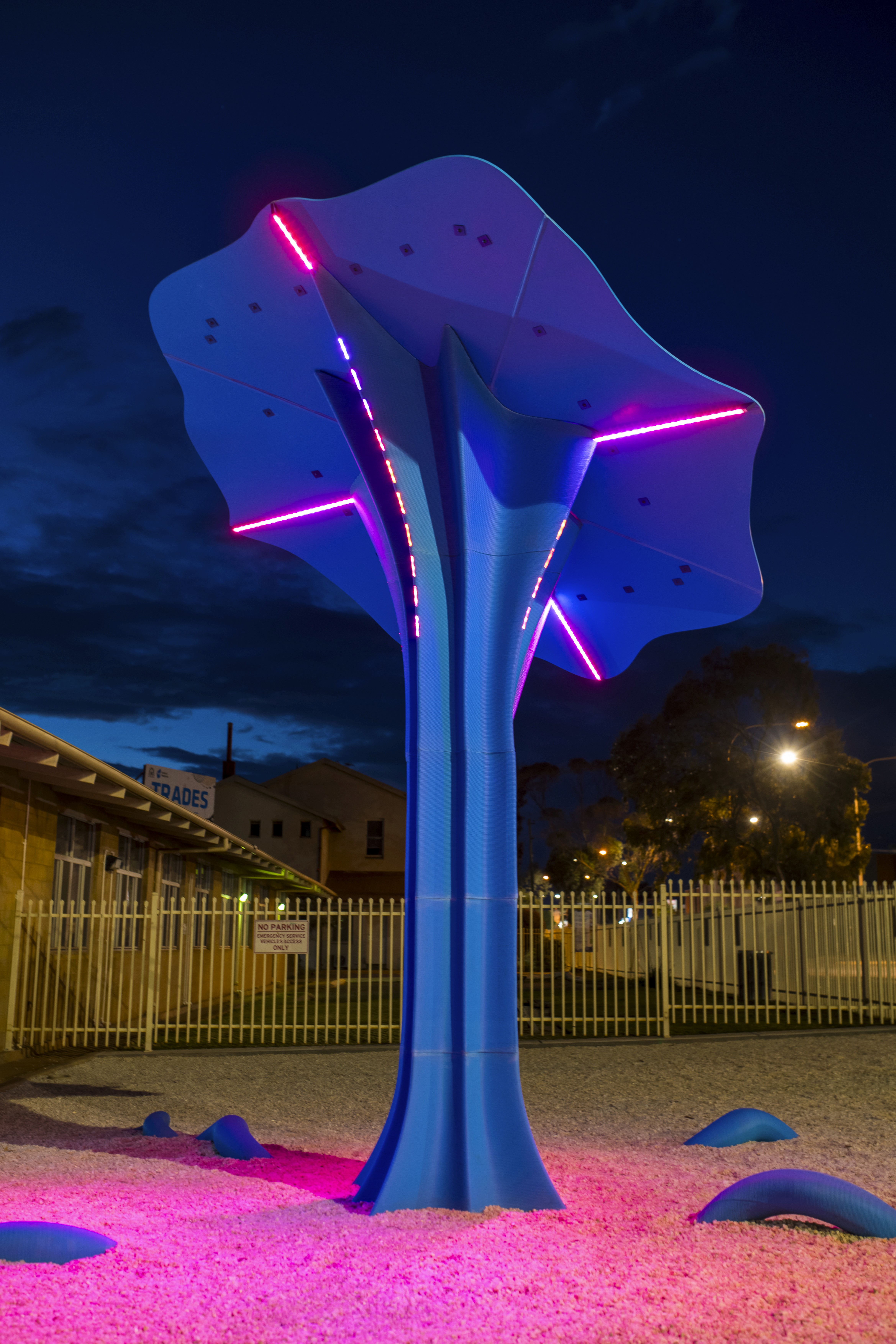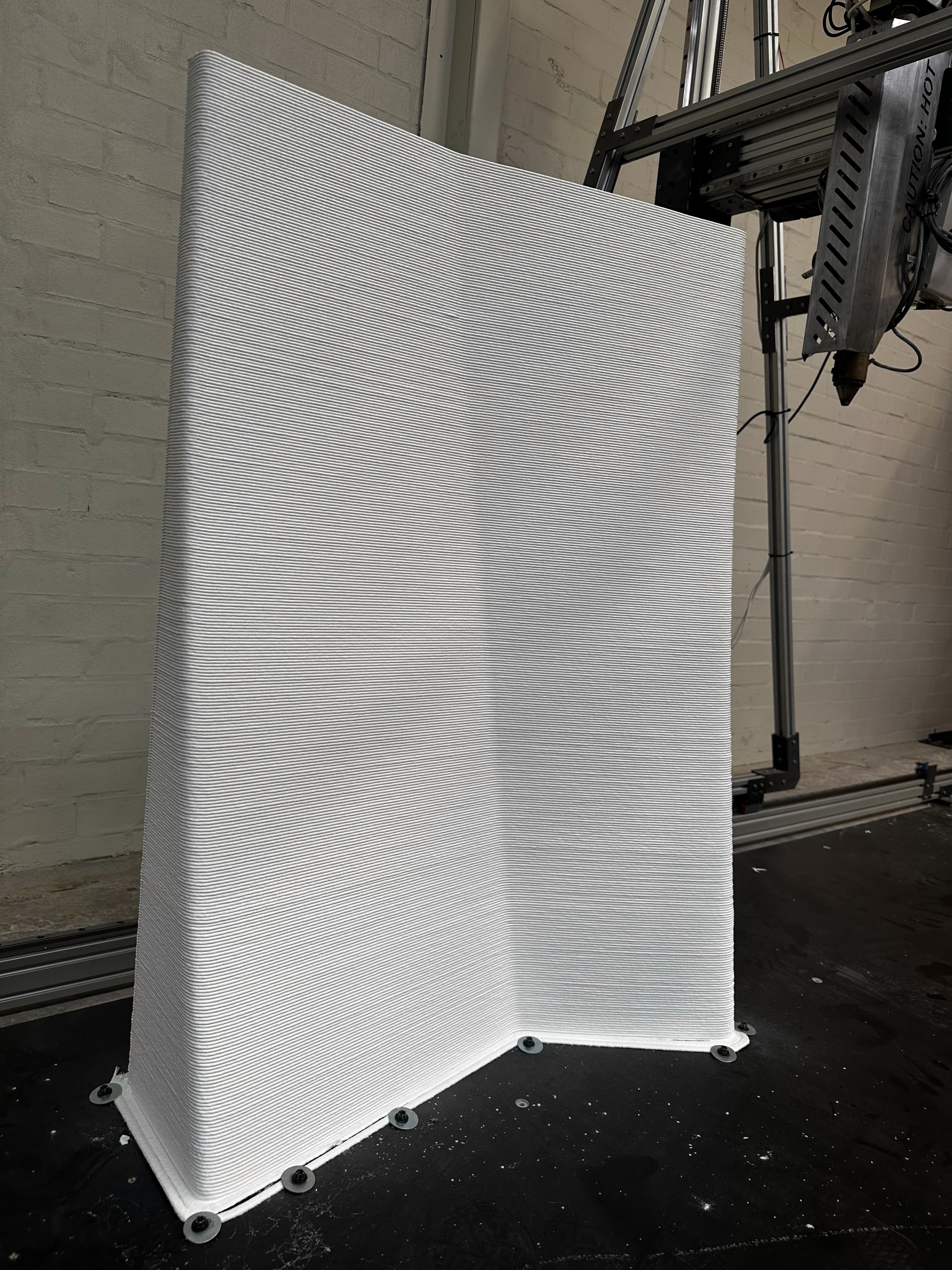Whats Best for Your Application? A Robotic Arm or Gantry-Based Large Format 3D Printing Solution?
Back

Use Case
Large Format 3D Printing unlocks the potential to craft big, complex parts with impressive precision and efficiency. If you're weighing up the differences between robotic arm systems and gantry systems, this guide will help you understand each system's unique features, benefits, and best applications, enabling you to make an informed decision tailored to your business needs.
What's Robotic Arm 3D Printing?
Robotic arm systems feature a series of interconnected joints that enable movement across multiple axes, like human arm movements. These systems come equipped with a printing extruder that can layer materials in varied patterns and structures, adapting easily to your design requirements.
Key Advantages:
• Flexibility and Versatility: Robotic arms are perfect for crafting intricate geometries and detailed parts, ideal for bespoke designs and complex structures.
• Modular Capabilities: These systems are not just about 3D printing; you can add more arms or integrate different functionalities like CNC milling. This adaptability is invaluable for businesses that are looking to grow and evolve.
• Ease of Relocation: Unlike their gantry counterparts, robotic arms can be easily moved and reconfigured within a facility, giving you more freedom in how you plan your production space.
Ideal Applications: Robotic arms are a game changer for designing industrial products like furniture and automotive parts, as well as for creating flexible moulds and tooling for the construction sector, such as pre-cast concrete moulds.
Hyperion's Large Format AM Gantry System Extruder
CEAD’s Flexbot Robotic AM System. Photo Credit: CEAD
CNC Design's VSF Composite Gantry System Photo Credit: CNC Design
How Do Gantry Systems Work?
Gantry based systems like Hyperion’s Large Format Printer involve a stationary frame and a moving platform that carries the print head across X, Y, and Z axes. This design supports high stability and large-scale printing capabilities. 3D printers like the Virtual Smart Factory Printer (VSF) gantry system by CNC Design offers a unique combination of gantry system 3D printing with a high performance 5-axis milling machine. This hybrid approach not only enhances the printer’s versatility but also allows for an all-in-one solution for both additive and subtractive manufacturing processes. This makes it particularly useful in industries where both design flexibility and structural integrity are critical.
Key Advantages:
• Large Print Volume: These systems are capable of handling massive projects, making them suitable for applications like building facades in the construction industry or large fixtures in automotive manufacturing.
• Speed and Efficiency: The inherent stability of gantry systems allows for faster print speeds, which can bolster productivity, especially in settings that require the mass production of parts.
• Lower Calibration Needs: Thanks to their rigid structure, gantry systems typically require less frequent recalibration, which means less downtime and lower maintenance costs.
Ideal Applications: Perfect for sectors that require the production of large objects or high-volume manufacturing, such as boat hulls in the marine industry, and less complex moulds and tooling in the construction industry.
Now, Let's Compare
Accuracy and Speed: Traditionally, gantry systems have an edge in production speed and path accuracy. However, innovations in robotic solutions like the CEAD Flexbot, with advanced laser trackers and Sinumerik toolpath control, are improving precision in robotic arm systems.
Cost Considerations: Gantry systems often have higher upfront costs due to their scale and complexity. However, the long-term scalability and flexibility offered by robotic solutions could provide a better return on investment for certain projects.
Facility Requirements: Gantry systems might need specific structural changes for installation, but robotic arms are typically less demanding in terms of space and infrastructure requirements.
Ease of Use: Modern control technologies mean that robotic systems can now be operated with well-known programming languages like G-code, simplifying the training process for your team and integrating smoothly into existing workflows.
Deciding between a robotic arm and a gantry system for large format 3D printing depends on your specific project requirements, production volume, and facility space. Models like the CEAD Flexbot are versatile and scalable, suitable for businesses anticipating growth. In contrast, gantry systems like Hyperion’s and CNC's VSF are ideal for large-scale, rapid production needs. Consider these factors carefully to make the most of what large format 3D printing has to offer.
Ready to Explore Your Options?
Interested in learning which large format 3D printing system fits your needs? Contact Hyperion today and see how our solutions can enhance your production process!








